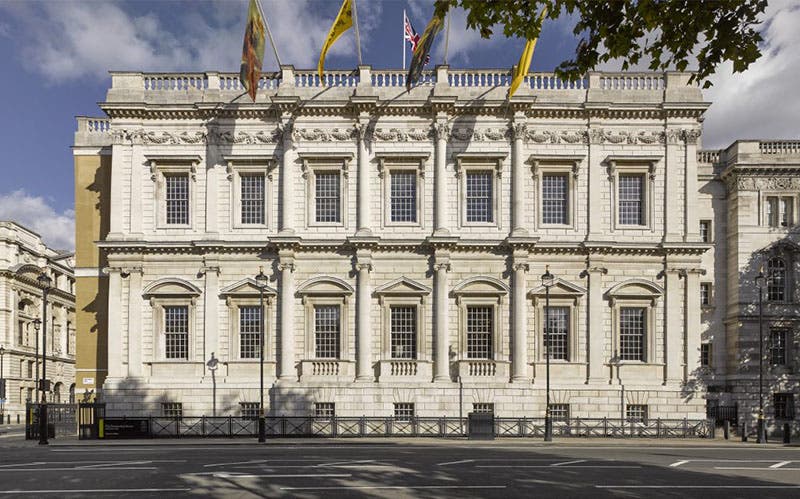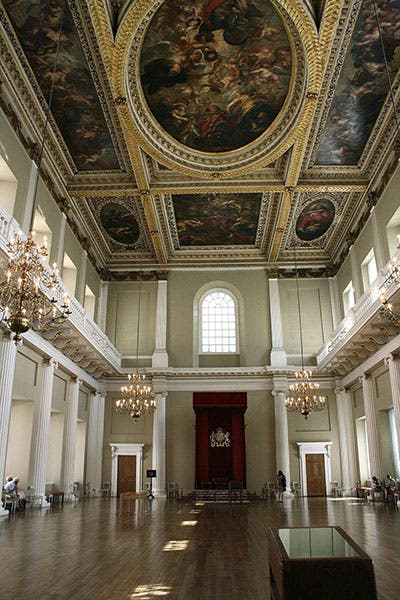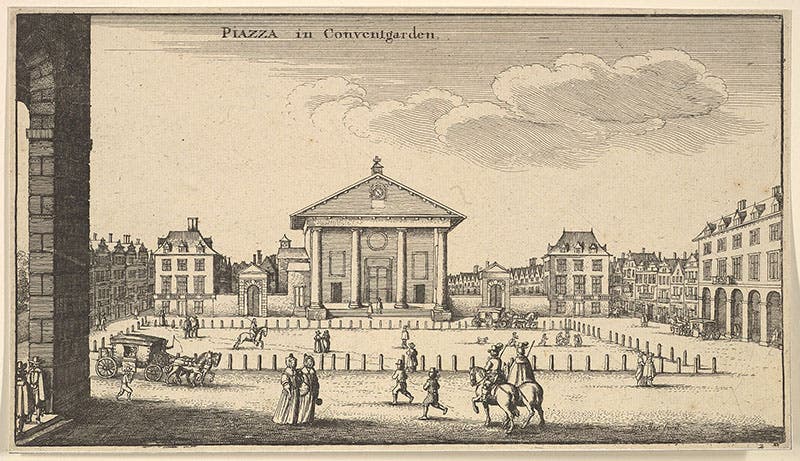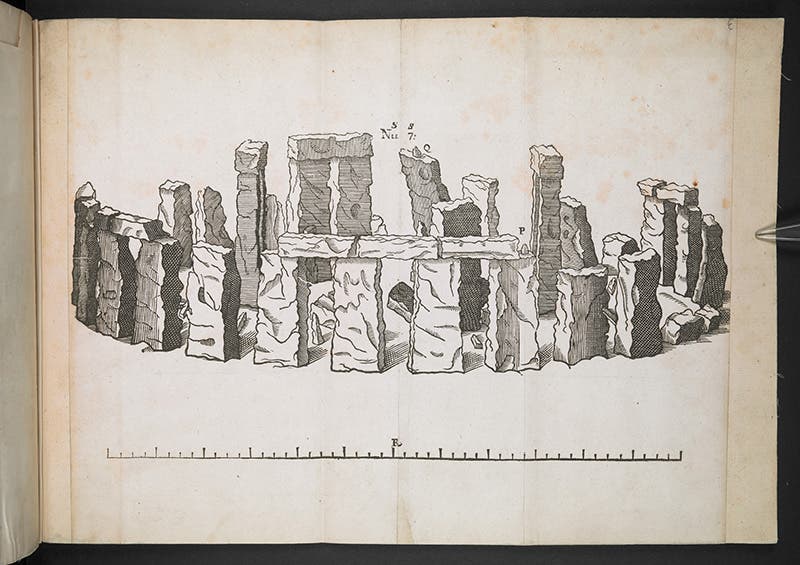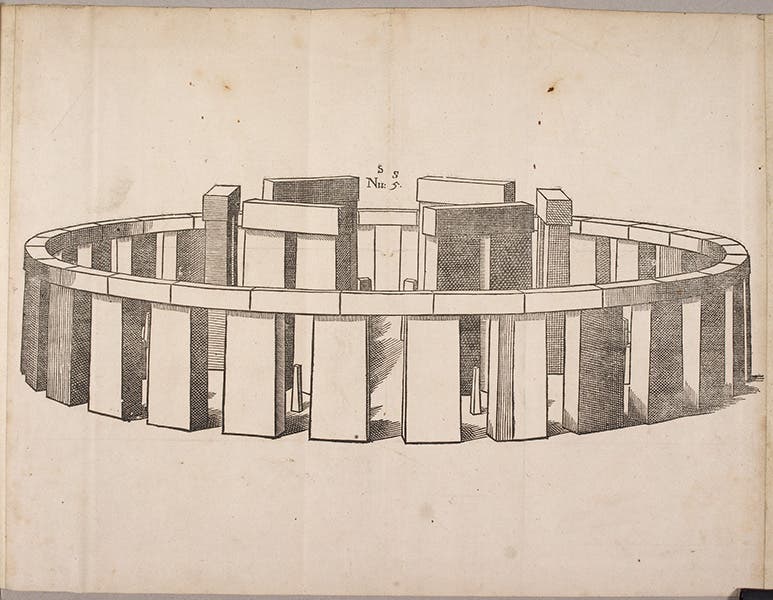Scientist of the Day - Inigo Jones
Inigo Jones, an English architect, was born July 15, 1573. Jones is noted for being the first to introduce Italian Renaissance architectural style, in particular the style of Palladio, into Great Britain. Renaissance architecture has been called Vitruvian, and also Pythagorean, because the basic design principles are based on harmonic ratios, such as 2/1, 3/2, 4/3 (hence Pythagorean) as well as on the proportions of the human body (Vitruvian). The Renaissance style also made use of the classical orders, since Vitruvius did so in his book on architecture. Jones made several trips to Italy, became enamored of the new Italian architecture, and of Palladio, and returned home to become Surveyor of Works for King James I and determined to expose England to Palladian style. He built the Queen's House in Greenwich and, beginning in 1619, the Banqueting House at Whitehall, London, perhaps his most famous building. We see here the exterior and the interior of that building (second and third images, below). The painted ceiling, completed in 1635, has nothing to do with Vitruvian style, since it is pure, flamboyant Baroque, and was executed by Peter Paul Rubens.
Jones also designed Covent Garden square, the first such public square in London, built, naturally, on Italian models. He designed several of the original buildings along the square, including St. Paul's Church, which is in the Tuscan style of Vitruvius and is said to be the first Vitruvian church in England. We show here Wenceslaus Hollar's engraving of the square as it appeared in 1647 (fourth image, just below). The square looks rather different now, although St. Paul's church is still standing right where Jones put it.
One of Jones’ early interests was Stonehenge, which attracted a lot of attention in the 17th century, as Italian interest in antiquities percolated into England. Jones was commissioned to survey Stonehenge by James I in the 1610s, and then wrote a fragmented book about it, which was not compiled and published until after his death, by his lifelong assistant and nephew, John Webb. It is an intriguing work, because Jones, in spite of suggestions by others that Stonehenge was Celtic in origin, concluded that Stonehenge was erected by the Romans during their occupation of England. He even attempted a visual reconstruction of the monument, as it might have looked right after the Romans bult it.
His posthumous book was called The Most Notable Antiquity of Great Britain, vulgarly called Stone-Heng, on Salisbury Plain (1655). The image above shows Stonehenge as it appeared to Jones when he surveyed it; the one below is his reconstruction as a classical Roman temple. We do not have the work in our Library, and have used the engravings in the copy in the British Library,
There are many engraved portraits of Inigo Jones, nearly all of them based on a 1636 painting by Anthony van Dyck that is now in Oxburgh Hall, Norfolk, with a copy in the National Portrait Gallery. We have used here the engraving executed by Wencelaus Hollar that was inserted as a frontispiece in Jones' Stonehenge book (first image).
Dr. William B. Ashworth, Jr., Consultant for the History of Science, Linda Hall Library and Associate Professor emeritus, Department of History, University of Missouri-Kansas City. Comments or corrections are welcome; please direct to ashworthw@umkc.edu.


